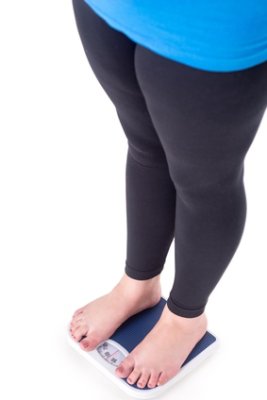Slim with protein and Q10
 If you want to lose weight and/or maintain your ideal weight, it is important to focus on the right proteins, on Q10, and on brown fat cells, as it all boils down to having an effective metabolism and proper energy utilization.
If you want to lose weight and/or maintain your ideal weight, it is important to focus on the right proteins, on Q10, and on brown fat cells, as it all boils down to having an effective metabolism and proper energy utilization.
If you plan to lose weight, forget all about counting calories or working up a sweat in the local gym, unless that is what you want. The first thing you should look at is the distribution of white and brown fat tissue in your body and how you can increase the burning of fat with a few adjustments.
White fat tissue causes unhealthy fat stores
We have white fat tissue all over our body. When we consume more calories than we burn, the excess calories are stored in the white fat tissue, which is typically situated around the stomach (leading to the dangerous apple shape), or on the hips and thighs (pear shape). These white fat depots are what most of want to get rid of - not just for cosmetic reasons but for the sake of our health.
Brown fat speeds up the lipid metabolism
Even though we have far less of the brown fat tissue, researchers have become increasingly aware of its enormous importance in recent years. The brown fat gets its color from the large quantity of mitochondria, which are cellular power plants. The cells in brown fat tissue have a particular ability to convert calories to pure heat with help from the enzyme UCP1 (uncoupling protein 1). In order for this to happen, however, we must have sufficient amounts of protein and Q10.
It has been known for quite some time that babies have brown fat tissue between their shoulder blades, but science has only recently discovered that adults have brown fat cells among the white fat cells in the breast and neck region. It is also worth making a note of the fact that obesity decreases the number of brown fat cells. Luckily, this is reversible.
The slimming effect of protein from fish and meat
Research from the University of Copenhagen and the Norwegian research institute NIFES (Nasjonalt Institut for Ernærings- og Sjømatsforskning) shows that for mice to gain one gram of body weight they must eat six times as many calories when they consume plant oil together with protein, compared with when they eat plant oil with sugar. Protein appears to be important for the burning of fat. Also, sugar (carbohydrate) tends to store calories as fat.
According to associate professor at the University of Copenhagen and NIFES researcher, Lise Madsen, this effect is seen in particular with protein from fish rather than dairy protein. As far as we know, science has still not tested protein from white and red meat. Nonetheless, animal protein contains the amino acid, carnitine, which helps convey fat from the bloodstream to the mitochondria of the cells where the fat is converted to energy.
Milk protein, however, plays a different role, and dairy products are associated with overweight, with particular focus on casein and the growth hormone IGF-1 that increases the number of fat cells. Therefore, it is important to choose the best types of protein.
The need for protein increases with weight loss
During the process of losing weight, many people may benefit from ingesting 1.5 to 2 grams of protein per kilogram of body weight to ensure an adequate metabolism and as a way of reducing the risk of losing muscle mass. The protein must be of the right quality in terms of supporting combustion (stick with fish, meat, and egg) and it should be distributed equally among the main meals of the day. Many people have a particular need for more protein with breakfast and/or lunch.
| NB. Too much protein may strain the kidneys and cause acid retention |
Mitochondrial enzyme and Q10 contribute to the fat burning process
Q10 is a coenzyme that helps mitochondria burn calories. We produce most of our Q10 in the body, but as we grow older our endogenous production decreases. In connection with the energy metabolism, muscles are able to burn both carbohydrate and fat. The muscles contain another mitochondrial enzyme called UCP3 (uncoupling protein 3) that contributes to the burning of fat. It is possible to activate UCP3 with moderate physical activity, where you do not get winded (aerobic combustion), and with supplements of Q10. Make sure that the Q10 supplement can document its quality and bio-availability.
One human study demonstrated that a daily supplement of Q10 (90 mg) boosted the combustion of fat in connection with training. Another human study showed that supplementation with 200 mg of Q10 daily moved the exercise threshold, effectively delaying the onset of exhaustion during training and reducing free radical damage. A third human study shows that walking for 150 minutes per week boosts UCP3 activity in patients with type 2 diabetes.
You can easily lose weight without hard training
Moderate physical activity stimulates metabolic fitness. This is useful knowledge, especially to those who are not into hard training. You can actually stimulate your body to burn more fat and lose weight at the same time by eating a healthy diet, getting enough protein with the main meals, taking supplements of high-quality Q10, and including lots of moderate physical activity such as walking, using the stairs, cleaning, bicycling, dancing, and taking every opportunity to get up from the chair and boosting UCP1 and UCP3 levels in the mitochondria. In the long run, it is the accumulated number of steps that counts, and a good target would be 10,000 a day. What really matters is that you get up from your chair every now and then, rather than sitting down for hours at a time.
Metabolic fitness and fat combustion - without exertionThe body uses a lot of oxygen to combust fat. Metabolic fitness is stimulated by moderate physical activity where you do not get winded. Protein and Q10 increase the effect. This boosts mitochondrial fat combustion in the brown fat tissue and in muscles. It is also good to get winded from time to time, as this boost cardiovascular fitness. Once your heart rate is back to normal, the fat burning picks up again. |
References:
Thomas Hoffmann. Proteiner gør dig slank. Videnskab.dk
Rikke Kruse Henriksen. Hvidt fedt og brunt fedt er ikke lige fedt. Videnskab.dk
Zheng A, Moritani T. Q10 Enhances Exercise and Fat Burning. J Nutr Vitaminol (Tokyo)
Cooke m. et al. How Q10 Helps Exercise. J Int Soc Sports Nutr
Fritz T et al. Walking Helps Uncoupling Protein 3 in Diabetic patients. Diabetes Metab Res Rev
Ane Bodil Søgaard, Karen Østergaard, Troels V Østergaard. Mælkehormon skaber fedme. Information



